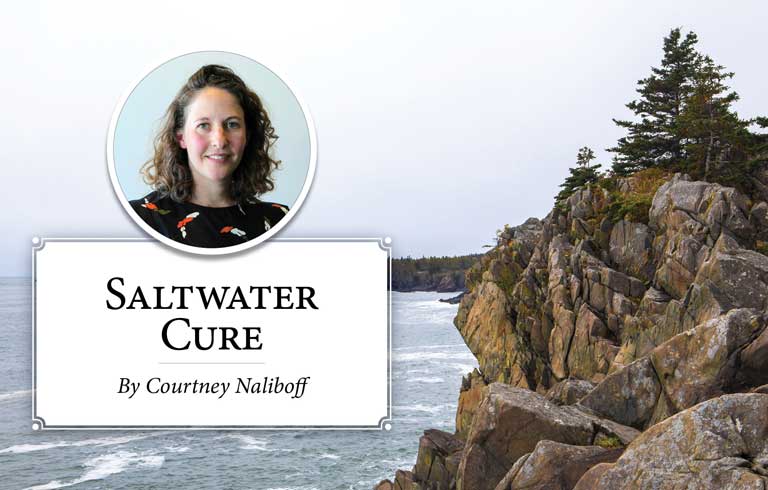It’s very close to the one-year anniversary of “quarantimes” as I write this column.
On March 13, 2020, our students had their last day of in-person school for the year, although we didn’t know it at the time. We shut everything down—for two weeks, then for a month, then for the rest of the school year.
We hoped for a normal summer, and instead we got takeout pizza and outdoor cocktail parties. We made it through the summer without any cases, only to have an outbreak in November. The mask mandate extended to outdoor visits.
Food, prepared at home, became an emotional touchstone during the pandemic.
School went remote again, then resumed. I missed Thanksgiving with my parents and siblings for the first time ever. Bill, Penrose, and I spent Chanukah and Christmas as a tight family unit, without the usual latke feast or trip to California.
This winter, I started doing a little exhibit card writing for the North Haven Historical Society. Lydia Brown, the executive director, reached out to several island writers to see if we’d be interested, and I set aside some time over February break to do the work, poring through documents to come up with a few succinct paragraphs about music, food preservation, and cooking on the island.
I read diaries and interviews from the 1890s through the mid-20th century. I devoured fellow columnist Sandy Oliver’s gorgeous book Saltwater Foodways. I marveled at the minutiae of life captured next to the major events: brown bread and stewed beef for dinner in one entry, the death of a young sibling in the next.
Food—prices, quantities, and whole menus—was rigorously documented. Was there any sense of posterity in those journals? That in 50 years, or 100, someone would be creating museum installations to reflect the gooseberry preserves, pickled greens, and smoked mackerel carefully stored for the winter in cellars and smokehouses?
I thought about that as I scrolled through Instagram, from an aesthetically pleasing chili crisp-topped bowl of noodles, to a crackly sourdough boule, to a tray of scones, to an enticing box of citrus.
Food, prepared at home, became an emotional touchstone during the pandemic. It couldn’t replace meals with friends, or nights out at favorite restaurants, but it could give us a measure of control and excitement. And, like our island predecessors, we rigorously documented meals, what was out of stock at the grocery store (the panic we felt when the shelves were empty of flour!), and our gardens, which many of us planted for the first time.
As we look back on the pantries, cellars, larders, and tables of the previous two centuries, I wonder how future islanders will look back on our culinary forays. As I noted the shortage of sugar during World War I, documented in Winnie Ames’ diary, will others note the flour shortage and draw their own conclusions? What will historians make of our obsession with sourdough? Although our homecooked food often has a global influence, will they be able to identify a 21st century North Haven foodway? What about the presence of our farms, and the crops and livestock they choose to grow? How will their offerings be analyzed?
We don’t always recognize the significance of the time we’re living in, or living through, but the last year has been obviously significant in so many ways. Although we might give ourselves an ironic wink when we carefully light and photograph our meals, check food blogs for the latest news, or make that Tik Tok feta pasta, future historians may very well posthumously offer thanks for the record we’re keeping of this unique and challenging time.
Courtney Naliboff teaches music, theater, and writing on North Haven.





